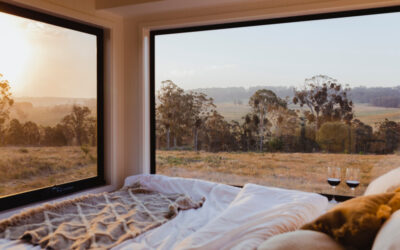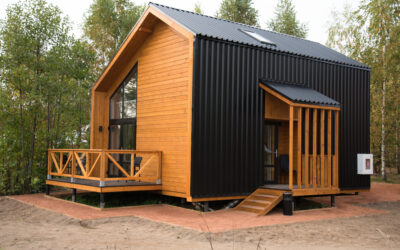What are the tax and investment considerations for a Granny Flat above versus a Tiny Home below? Income Tax Return Reporting - Income Streaming Tiny Homes Tiny home ownership does not have to follow the ownership interest of the underlying property ownership. For...
Depreciating Landscaping Costs

When it comes to investment property depreciation, people mostly focus on the building and what’s inside, but the outdoors can be depreciable too.
It is important to know that not all landscaping is depreciable; there is a difference in how ‘hard’ and ‘soft’ landscaping is treated in terms of depreciation.
Hard landscaping, also known as hardscape, is the structural component or hard-surfaced area of the yard and assets. Sheds, retaining walls, outdoor tiles, seating and concrete walkways are examples. Assets such as these hold depreciable value and can be claimed using capital works deductions or plant and equipment depreciation, depending on which category it falls into.
Soft landscaping, or softscape, includes the ‘animate’ areas of a landscaped space. Examples are grass, trees, plants and soil. Residential property investors can’t claim depreciation on these assets. Instead, soft landscaping improvements to the property may be included in the property’s cost base, giving the potential to reduce any applicable capital gains tax liability upon sale.
Landscaping and construction expenditure explained
The ‘act’ of landscaping itself is not tax deductible according to Subsection 43-70(2) of the Income Tax Assessment Act 1997, which says that construction expenditure specifically does not include expenditure on landscaping (or other costs like demolishing existing structures, clearing, levelling and draining).
However, if physical capital works assets are purchased as part of a landscaping process, Division 43 applies and depreciation can be claimed on these items.
Examples of depreciable landscaping assets
The following table highlights some of the common depreciable assets found in a rental property’s landscaping design.

These items alone produce a total depreciation deduction of almost $21,000, highlighting how important it is to include outdoors items still eligible for deductions.
Case study – Landscaping expenditure
Bob & Mary’s investment property’s yard is severely damaged and needs to carry out extensive landscaping works. This includes some earthworks, removal of debris, re-turfing and constructing a new brick retaining wall.
Bob & Mary can’t claim depreciation or include the earthworks, debris removal and turf in his property’s capital expenditure. However, they can claim capital works deductions on the retaining wall. This is because the retaining wall constitutes more than earthworks that simply created artificial landscapes.

Getting it right with a specialised tax depreciation schedule
A tax depreciation schedule is always the best option to ensure maximised and compliant depreciation claims are achieved. BMT site inspectors ensure the legislation is applied to ensure both indoor and outdoor assets are claimed correctly.
If you would like further advice on depreciation or any other property taxation please feel free to contact our office
Above information was courtesy of BMT BMT website.




